Northeast Ohioans, like everyone in the world right now, have been feeling the financial burden of the coronavirus pandemic for months. Job loss, business slowdown, and higher prices during the COVID-19 outbreak have brought about economic hardships. This makes it harder to keep up with monthly bills and has led many Ohioans to ask, “What do I do if I can’t pay my utility bill?”
Fortunately, there are resources to help residents when they can’t pay their utility bills. From the local and federal levels, there are utility bill assistance programs designed to keep residents in good standing and prevent electric, gas, water, or phone shut off because of the inability to pay.
Emergency Assistance for Utility Bill Payments
If you or anyone you know is in immediate need of help with utility bill payments, there is a national resource that uses local agencies to respond to such needs. Just like with other crisis numbers, dialing 2-1-1 will connect you with a local team that can help. It’s a little like 911 but offers emergency assistance for essential services like food, health, and bill payment.
2-1-1 immediately directs emergency bill payment assistance to a local agency, so there’s no need to maneuver a confusing maze of phone numbers and bureaucracy. The local agency will guide you to the proper channels in order to get help with paying your energy bills.
Utility Bill Help from the Home Energy Assistance Program (HEAP)
One resource to help with electric, gas, or bulk fuel bills is the federally-funded Home Energy Assistance Program (HEAP). HEAP is a one-time benefit that helps with utility shut off notices, disconnections, and new service installations.
The program is divided into 3 crisis events: winter, summer, and regular. The winter crisis program provides energy bill assistance from November 1 – March 31, while the summer crisis program is a benefit for the months of July and August only. The regular HEAP program provides help with utility bills for those in need from July 1 – March 31. For HEAP eligibility, there is an income threshold.
Another federally-funded program that provides assistance with utility payment is the Low Income Home Energy Assistance Program (LIHEAP). LIHEAP’s mission is to help pay a portion of energy bills for low-income households where a large percentage of the income goes toward home energy bills. There is also funding from LIHEAP that provides assistance with minor, energy-related home repairs and home weatherization.
Percentage of Income Payment Plus (PIPP) Utility Bill Payment Assistance
If you’re looking for a gas or electric bill assistance program that has consistent year-round benefits, the Percentage of Income Payment Plus (PIPP) program may be an option. However, like HEAP, PIPP has an income threshold.
PIPP benefits depend on a home’s heating source. If a home is heated with gas, the monthly gas payment is 6% of household income. For homes heated by electricity, the monthly electric payment is 10% of household income.
Ohioans on PIPP assistance are also eligible to qualify for the Electric Partnership Plan (EPP), which is designed to help them reduce their home’s electricity usage. The EPP can select a provider who will then perform in-home electric audits and implement energy-efficient measures to reduce electric usage.
Financial Assistance for Paying a Phone Bill with the LIFELINE Program
Programs to help pay utility bills don’t end with just energy bills. The Federal Communications Commission’s Lifeline program also provides discounted phone service for income-qualified consumers.
Lifeline was designed to help individuals have more opportunities. These opportunities that come with having phone service provide security through connection to jobs, families and emergency services that they may not have had before. The program is set up to provide assistance with cell phone and landline bills. And in 2016, the FCC expanded the Lifeline program to include support for broadband connection and payments.
If you or someone you know is in immediate need of assistance paying utility bills, there are many resources that can help. For more information and a definitive list of Energy Assistance Programs by county, contact your local agency provider or dial 2-1-1.
Want to learn more? Subscribe to NOPEC’s Energy Connection newsletter for energy-efficiency tips and chances to win smart technology.
Tags: Consumer Questions, Energy Efficiency
Categories: Energy Efficiency


